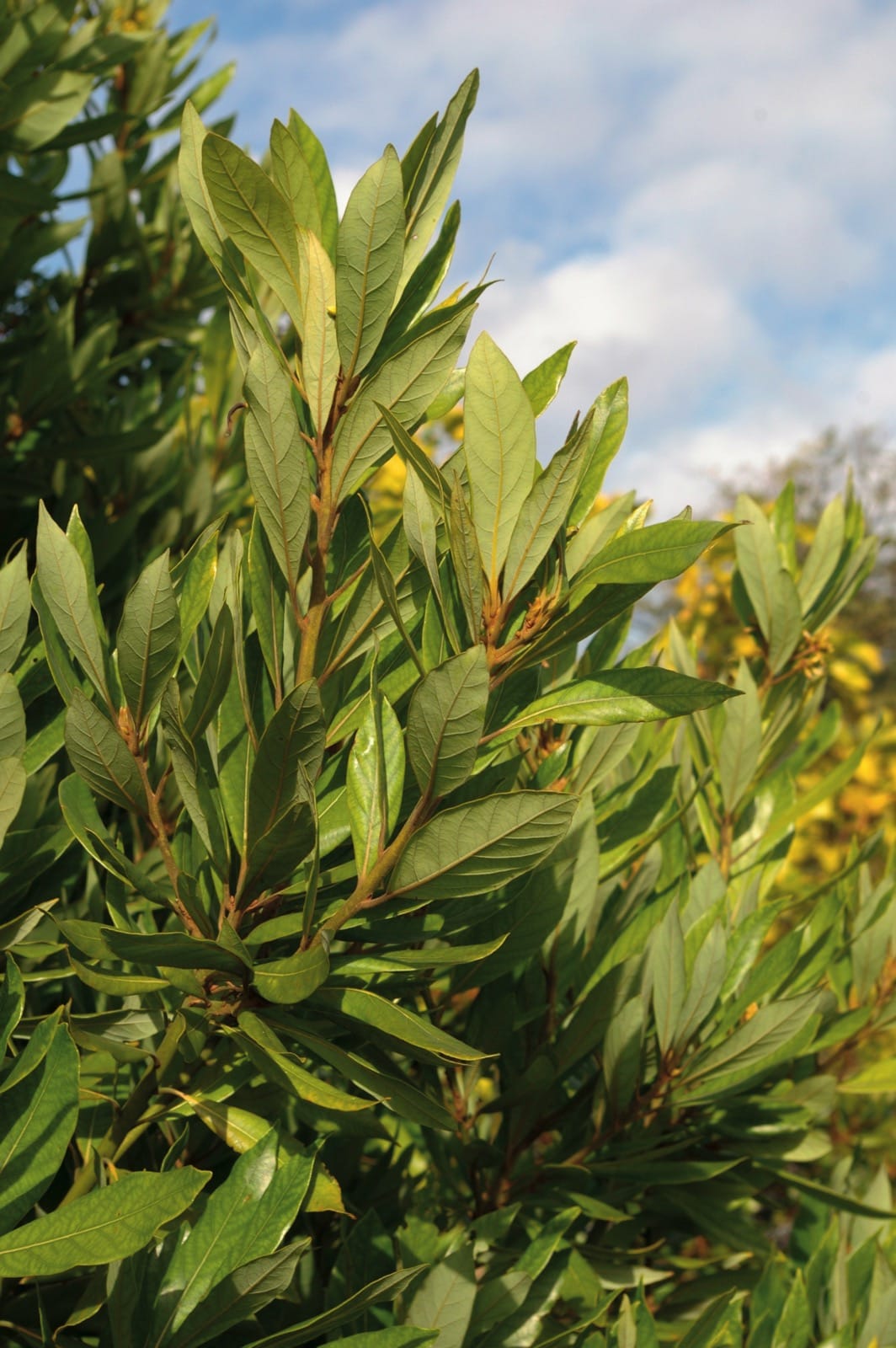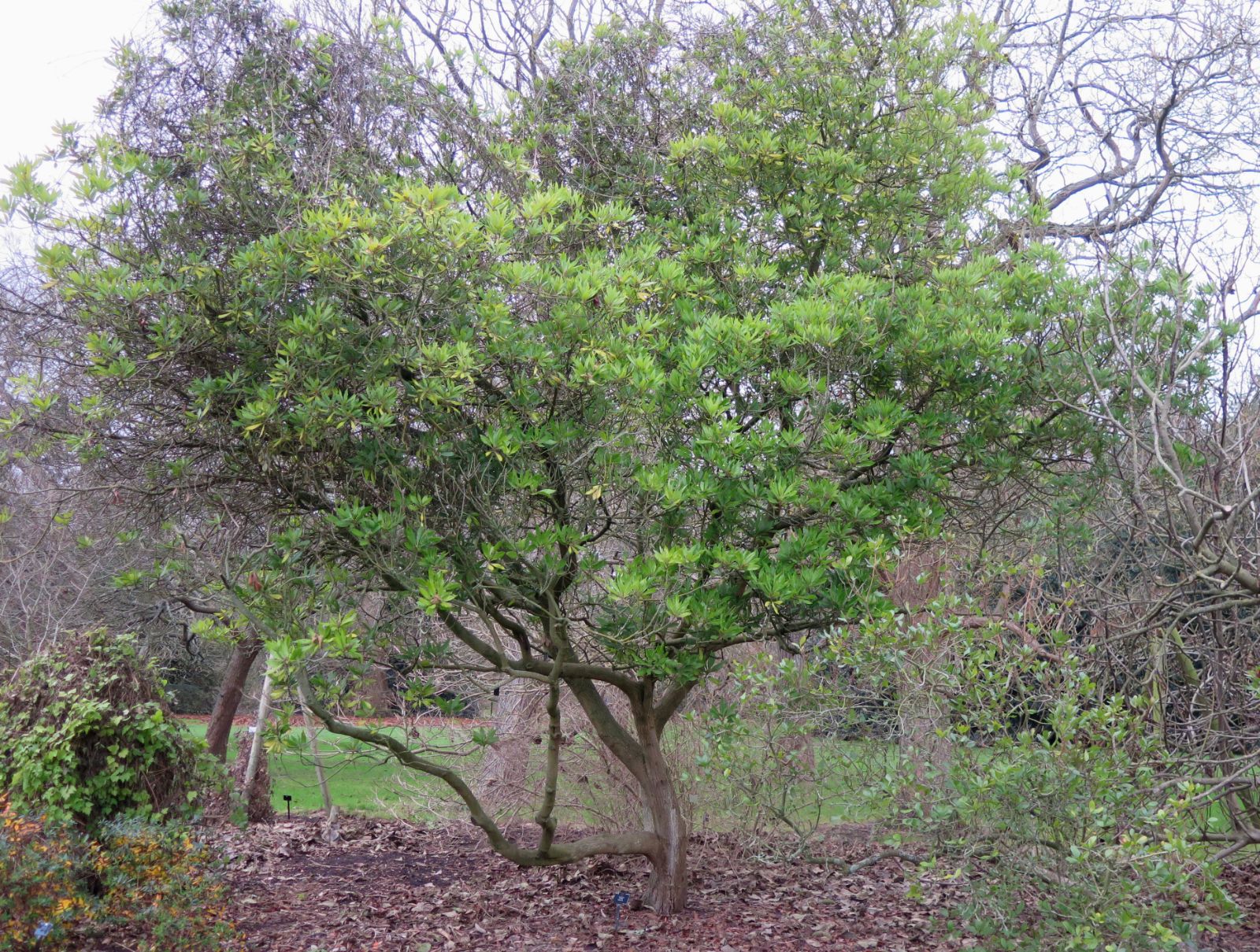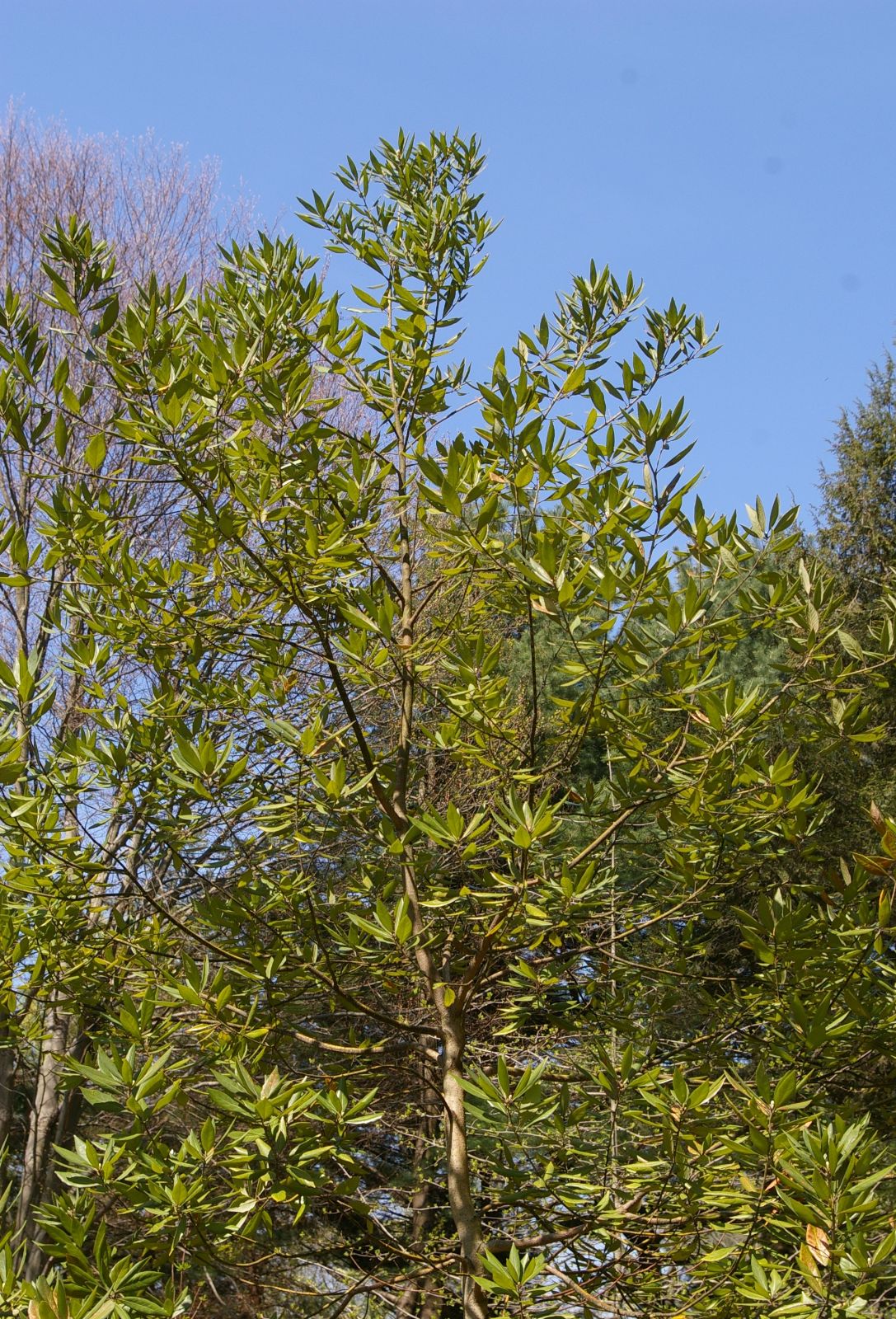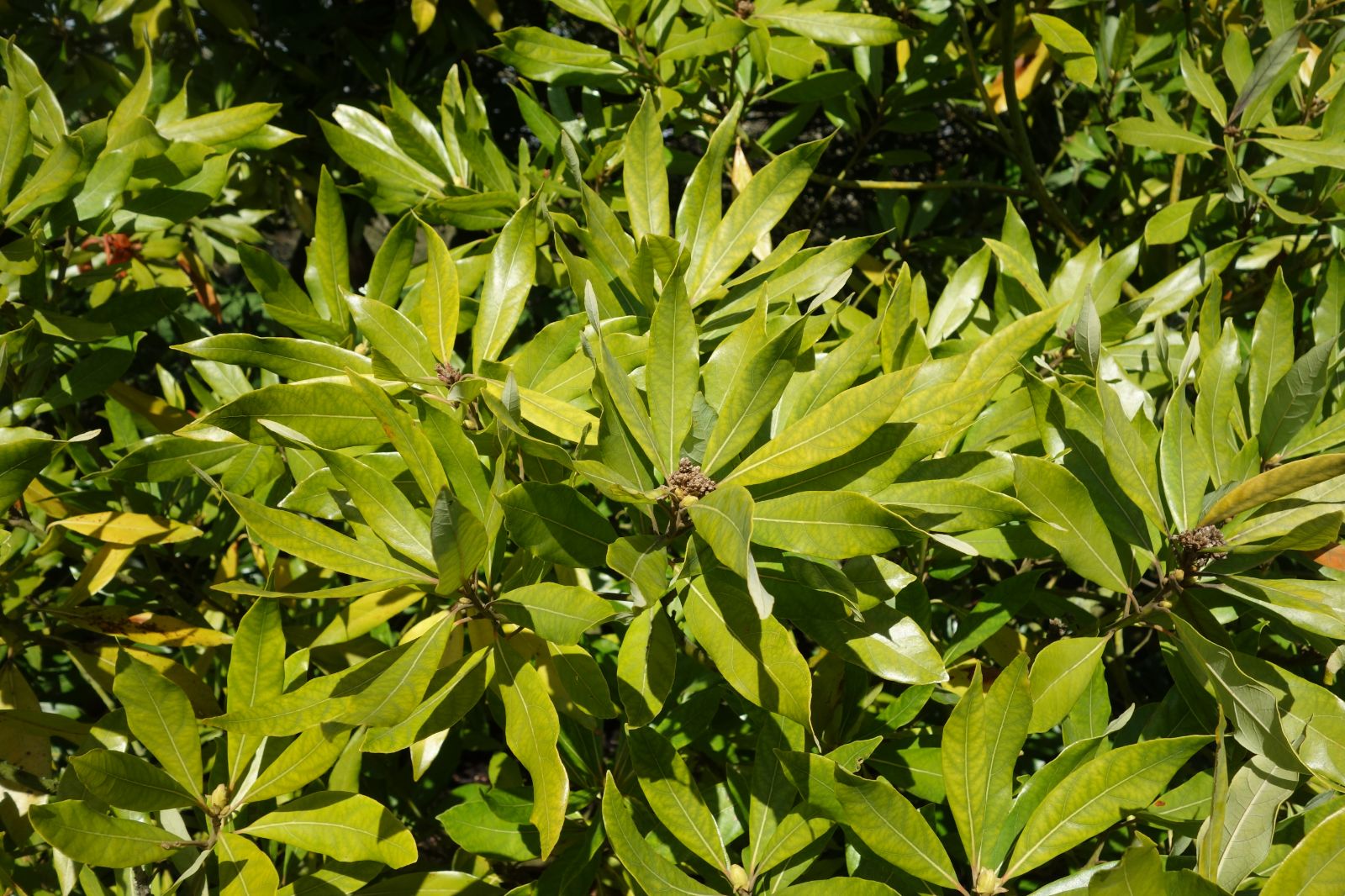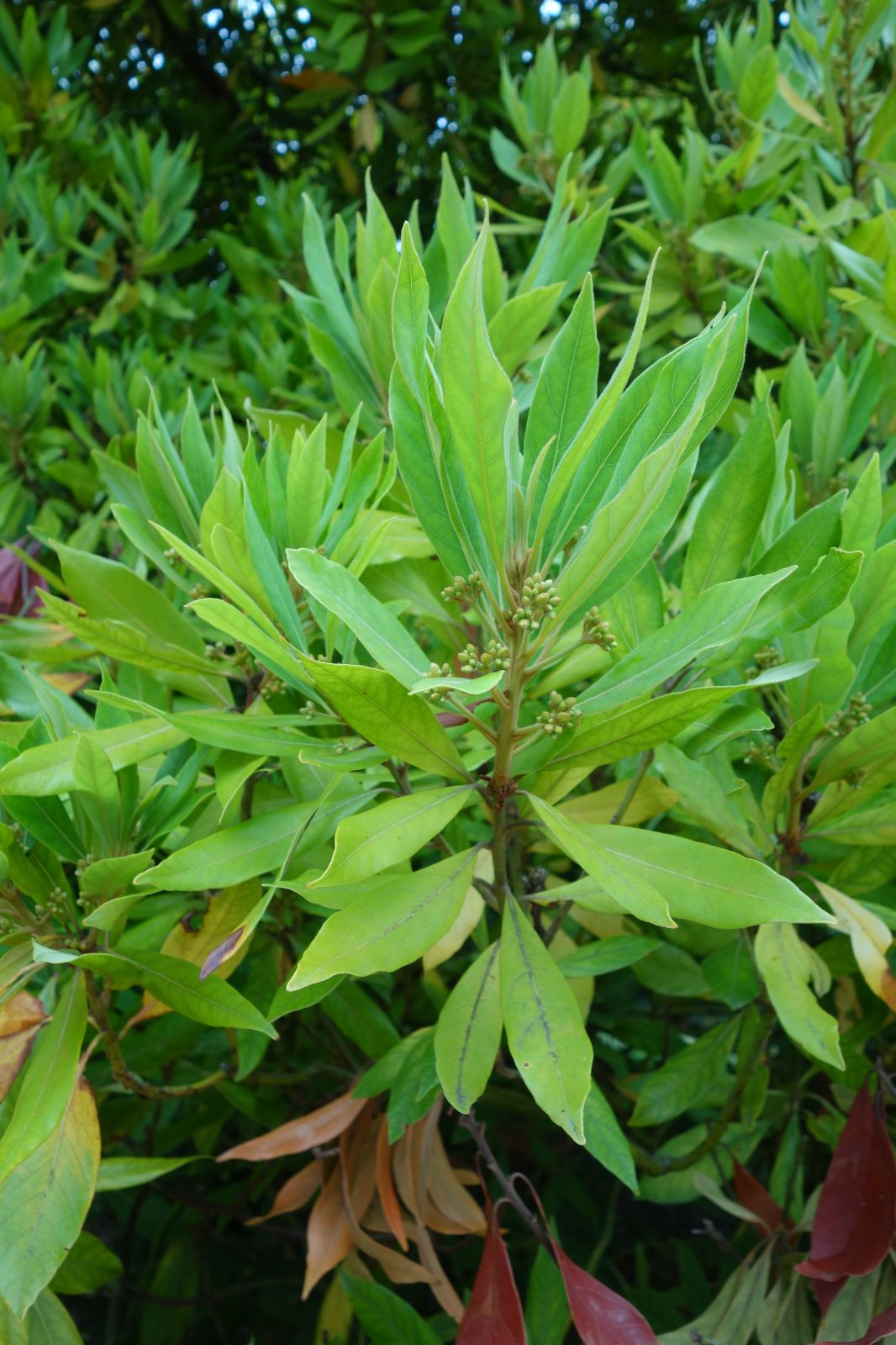Persea palustris
Credits
Article from New Trees by John Grimshaw & Ross Bayton
Recommended citation
'Persea palustris' from the website Trees and Shrubs Online (treesandshrubsonline.
Genus
Common Names
- Swamp Bay
Tree to 15 m, but usually shorter and sometimes shrubby. Bark to 8 mm thick, grey, fissured. Branches held more or less upright, green when young. Leaves 6.5–18 × 1.5–5.5 cm, obovate to ovate or lanceolate, base cuneate, occasionally obtuse, margins entire, apex acute, upper surface shiny green and glabrescent, lower surface glaucous, with short erect red hairs; petiole 0.8–2.5 cm. Inflorescence formed of a number of few-flowered, subterminal axillary cymes, with peduncles 1–7.5 cm, usually longer than subtending petiole; flowers 4.5–5 mm long, yellowish green, appearing in spring or early summer. Fruits 7–8 mm, subglobose to ellipsoid, slightly apiculate, black, maturing in autumn. Kopp 1966, Elias 1980. Distribution BAHAMAS; USA: Gulf and Atlantic Coastal Plain, Maryland (endangered), Virginia south to Florida and Texas. Habitat Coastal, on thin sandy soil, often in wet situations. USDA Hardiness Zone 8–9. Conservation status Not evaluated. Illustration NT554, NT556.
Although closely related to Persea borbonia and sometimes included within it by some authorities, P. palustris is distinct in both its ecology and morphology. The chief morphological distinction from P. borbonia is the presence of visible hairs on the underside of the leaves, but its habitat preference for pine barrens as opposed to rich bottomlands is another good character. It is seldom seen in cultivation, even in the United States, but a plant at Kew from a Warner & Howick collection (WAHO 181) made in coastal North Carolina is growing well, forming a broad-based shrubby tree, with a weak central stem to about 5 m, that flowers each year. Persea humilis Nash (syn. P. borbonia var. humilis (Nash) Kopp) is clearly closely related to P. palustris. From scrubland in Florida, where it is a small shrubby tree, it differs from P. palustris in having smaller leaves that are densely covered with copper-coloured hairs below. Some forms are very attractive, but it is not known to be in cultivation outside Florida.

